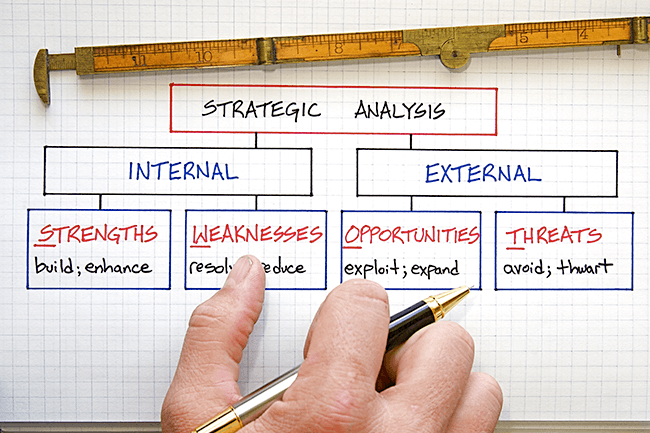The Fishbone Diagram: What It Is and 3 Good Reasons to Use It
Have you ever tried to understand the idea of an intersection without having a Venn diagram to ease the way?
That is the beauty and power of diagrams.
Diagrams are often used to convey complicated concepts, patterns, and systems to other people. However, they may also be helpful in our own exploration and comprehension of these concepts. For complicated situations, we employ a fishbone diagram (aka a cause and effect diagram).
Suppose your team is trying to figure out why a specific product isn’t as popular or profitable for your company as you’d hoped. Using a fishbone diagram, you may find the root causes of specific results, which can then be used to better them in the future.
Keep on reading to learn everything you need to know about the Fishbone diagram and the three key benefits of using it as one of your problem solving tools.
Understanding the Fishbone Diagram
To honor Professor Kaoru Ishikawa, a quality management pioneer and the man responsible for the invention of the fishbone diagram, a fishbone diagram is also known as the Ishikawa diagram.
Fishbone diagrams, which were originally employed for quality improvement, may now be utilized for a variety of problem-solving purposes.
Advantages of Using the Fishbone Diagram
A fishbone diagram is an excellent tool for conveying a lot of complicated information.
Because these diagrams assist teams to understand the sources of certain outcomes, or in other words, the core causes that lead to effects, they are very valuable. Climate change is an example of a complicated issue that has several causes.
1. Facilitating Cause and Effect Analysis
Reflective analysis may benefit from the usage of fishbone diagrams.
To assist teams in better grasping what’s driving the statistics to climb or decrease, these graphs may give context that is otherwise absent. To get the greatest outcomes, teams need to know where errors are occurring and where income is being wasted.
2. Helps With Setting the Right Goals
As a planning tool, fishbone diagrams may also be useful.
Fishbone diagrams are great for determining the best strategies for achieving desired results and planning the necessary steps. You’ll want to ensure that you’re using the right hybrid model, which will be essential in communicating these goals and strategies to your team.
3. Ideal for Root Cause Analysis
A fishbone diagram is a simple but effective method for brainstorming the causes of issues and how they interact. Use one at your next brainstorming session to get a better understanding of quality concerns and where your problem-solving efforts should be directed.
Step two is to ensure that there will be no repeat of the problem. Corrective action is only the beginning; it is critical to keep an eye on the issue and make sure it has been fixed. With an audit tool that allows you to simply add questions based on remedial actions and promptly report on results, you can get the most out of your audits.
Problem-solving, remedial action, and frequent audits all work together to foster a quality culture and ensure ongoing progress.
The Six-Step Process for Creating a Fishbone Diagram
Fishbone diagrams are easy to create and put into practice.
To create a simple fishbone diagram, follow these six steps.
1. Inquire About the Issue at Hand
To begin sketching this cause-and-effect diagram, begin by identifying a specific issue.
In the case of a corporation that develops automobiles, a malfunctioning taillight may be a common problem. You may say something like, “My car has a faulty taillight,” if you were in this situation. Draw a long line from the problem statement to the left.
2. Identify the Root Causes of the Issue
Diagram the possible sources of the issue by drawing diagonal lines on each side of the problem statement.
Premade categories are accessible online, but you may also create your own. Problems with your personnel, raw materials, equipment, and the like might all fall into one of these categories.
3. Describe the Causes of Each of These Problems
Following the identification of causes in general, begin writing down the components that contribute to these causes.
Perhaps your staff hasn’t received adequate training. You’d look for a suitable category (maybe “workforce difficulties”), and then provide a short description of this particular problem there.
4. Include Sub-Branches When Necessary
Sub-reasons may not be covered by the main causes and major categories of the fishbone diagram; in this case, you may draw extra lines on the diagram to indicate these causes.
What’s more, if you have one major “materials” category as a cause, you may have two sub-cause categories for “domestic material” and “imported material,” respectively.
5. Analyze These Causes
Your cause-and-effect links should be examined by you and your team.
You may use the “five whys” strategy to get to the bottom of an issue by asking the question “Why?” five times. In order to uncover the core cause of a problem, you must be able to work backward from the effect to an ever more specific cause.
6. Make a Plan on How to Solve the Problem
Don’t wait until it’s too late to fix any faults that may be preventing your items from reaching their full potential.
When you think you’ve figured out the root cause of the problem shown at the top of the fishbone diagram, it’s time to move on to the next step. You’ll waste time and money trying to fix every possible problem, rather than just focusing on the most probable one.
Strategy and Brainstorming Tools: Exploring the Fishbone Diagram
You can use a fishbone diagram for more than simply dazzling your friends and coworkers. Using them, we can undertake some of the most important work there is: addressing complicated issues.
There are several ways in which they might inspire us to look into and identify what we can alter. Since they are visible, we can refer to them as we make these adjustments, so we can keep track of our progress. We hope that our guide has given you a solid starting point in using the fishbone diagram to your benefit.
You should also check out our blog section for more tips and advice on communicating with your remote team members.














